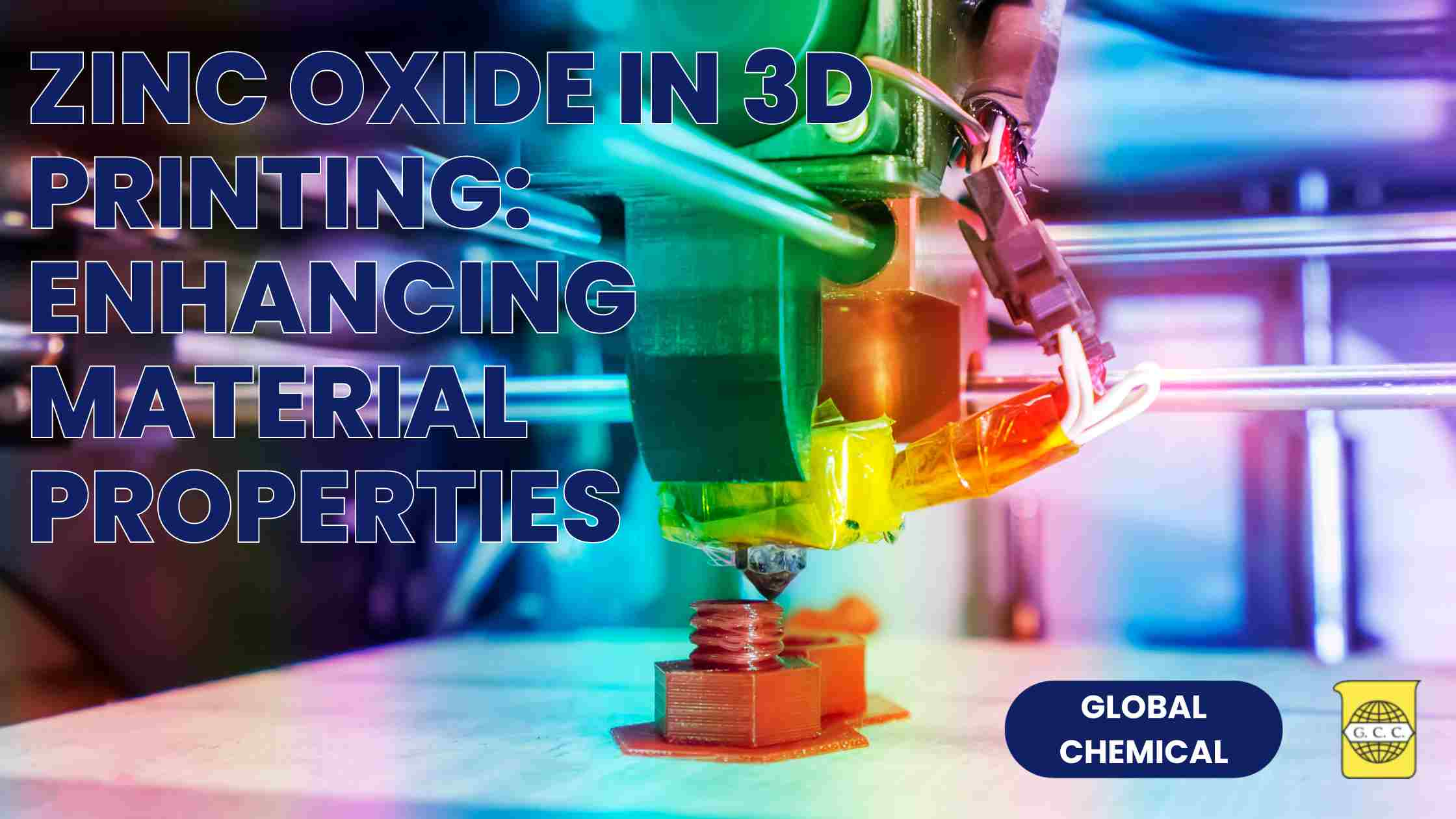
Global Chemical Co., Ltd., a company with a rich history dating back to its establishment in 1974 as a manufacturer of Zinc Chloride, has evolved over the years to produce a wide range of Zinc Chemicals. These include Active Zinc Oxide, Zinc Oxide BP and USP grades, Nano Zinc Oxide, Zinc Carbonate, Zinc Ammonium Chloride, Zinc Sulfate, and more. Known for their high quality and competitive pricing, these products have found applications in various industries. In this blog post, we will explore the role of Zinc Oxide in 3D printing processes and how it enhances the material properties of printed objects.
The Role of Zinc Oxide in 3D Printing
Understanding Zinc Oxide
Before we dive into the world of 3D printing, let’s start with a brief overview of Zinc Oxide. Zinc oxide is a versatile compound with a wide range of applications. In the context of 3D printing, it serves as a valuable additive or filler material that can significantly impact the properties of printed objects.
3D Printing Technology
3D printing, also known as additive manufacturing, has revolutionized the way objects are designed and produced across various industries. This technology involves the layer-by-layer deposition of material to create three-dimensional objects. It has gained immense popularity for its versatility and potential to create complex structures with precision.
Zinc Oxide as an Additive in 3D Printing
Enhancing Material Properties
Zinc oxide is used as an additive in 3D printing processes to enhance the material properties of printed objects. It offers several advantages that contribute to the overall quality and performance of the final product.
Enhancing Material Properties with Zinc Oxide
Improved Strength and Durability
The addition of zinc oxide to 3D printing materials improves the strength and durability of printed objects. This is particularly important in applications where robustness and resilience are required.
Enhanced Thermal Properties
Zinc oxide-infused 3D prints exhibit enhanced thermal properties. They can better withstand temperature variations, making them suitable for applications that involve exposure to heat or extreme cold.
Surface Finish and Quality
Zinc oxide also plays a role in improving the surface finish of 3D-printed items. It helps reduce surface imperfections, resulting in smoother and more aesthetically pleasing objects.
Applications of Zinc Oxide-Infused 3D Printing
The benefits of zinc oxide-infused 3D printing extend to various industries and applications. Some notable examples include:
- Aerospace: Strong and lightweight components for aircraft and spacecraft.
- Healthcare: Biocompatible medical implants and prosthetics.
- Automotive: Durable and heat-resistant automotive parts.
- Electronics: High-performance electronic components with improved thermal management.
Real-world case studies demonstrate the successful integration of zinc oxide in 3D printing across these sectors.
Challenges and Considerations
While zinc oxide offers numerous advantages, it’s important to acknowledge potential challenges and considerations associated with its use in 3D printing. Proper dosage, compatibility with other materials, and printing techniques are factors that require attention to optimize the benefits.
Future Trends and Innovations
The field of 3D printing continues to evolve, and innovations related to zinc oxide are expected to grow. Researchers and industry professionals are exploring new ways to harness the potential of this additive to create even more advanced and high-performance materials.
Conclusion
In conclusion, Zinc Oxide’s role in 3D printing is a testament to its versatility and significance in modern manufacturing. Its ability to enhance material properties, including strength, durability, thermal resistance, and surface finish, has opened up new possibilities in various industries. As technology continues to advance, we can anticipate further innovations and applications of Zinc Oxide in additive manufacturing.
About Global Chemical Co., Ltd.
Global Chemical Co., Ltd. has been a reliable manufacturer of zinc chemicals since its establishment in 1974. With a steadfast commitment to quality and competitive pricing, the company continues to provide essential resources to various industries, including those at the forefront of 3D printing technology. For more information about their products and services, please visit their website.
As we look toward the future of manufacturing, the role of Zinc Oxide in enhancing material properties through 3D printing is poised to make a lasting impact.
